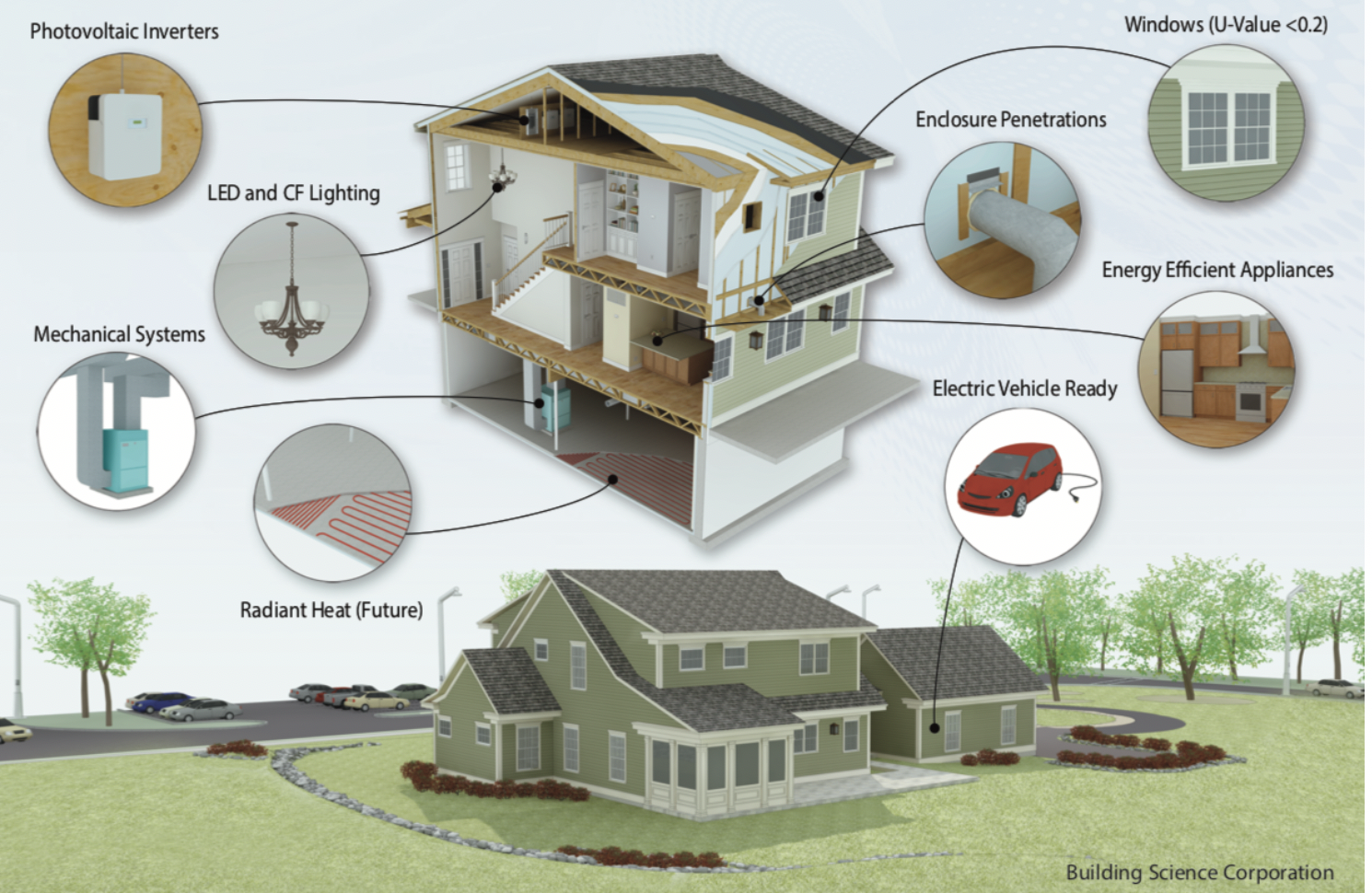Homeowner Training
New ResidentialWhat is Homeowner Training?
Green homes and residential buildings require an ongoing commitment on the part of individuals (e.g., occupants) and organizations (e.g., maintenance contractors) responsible for regular maintenance and operation of the home to meet intended sustainable performance goals. Homeowner education is the key to achieving long-term goals of cost savings, energy efficiency, resource conservation, and pollution prevention while meeting the comfort, health, and safety requirements of a home or residential building.
Green homes and residential buildings, in particular, may contain new equipment, technologies, and maintenance activities that might be unfamiliar to residents and maintenance contractors. A formalized program of occupant training is an important step to ensure that the residents acquire the skills and knowledge they need to utilize and optimize a green home’s features and contract green contractors and service providers.

Figure 1 – Net-Zero Energy Residential Test Facility (NZERTF). (Source: National Institute of Standards and Technology (NIST).
How to Implement Homeowner Training
Effective homeowner education for high-performance homes:
- Provides residents with training and instructions on the green features of their home and how to optimize performance
- Integrates indoor environmental quality, energy efficiency, waste management, and water conservation into standard systems and routine practices
- Utilizes expert knowledge to evaluate and improve on O&M practices
- Highlights green and high-performance features when selecting contractors and services
Homeowner education provided by building contractors may cover correctly setting and using smart sensors and controls, such as programmable thermostats, smart meters, demand control enabled appliances and other energy-saving features of the home (see Demand Response and Peak Load Management, Smart Metering, Smart Sensors, and Controls). Builders can establish clear links between maintenance activities and cost savings or resource consumption for the homeowner. Residential construction companies can provide informaton about green cleaning practices and environmentally-friendly household products, as well as information on recycling, composting, integrated pest management, and proper disposal of chemicals, paints, or other toxic materials (see Green Cleaning, Integrated Pest Management, Safe, Non-Toxic Materials, Sustainable Materials, Composting, Source Reduction and Recycling).

Figure 2 – Training should establish connections between efficiency and savings (Source: USGBC).
Depending on the climate, housing type, and landscaping, a particular focus might be given to highlight significant opportunities to meet performance expectations. For example, landscapers can emphasize water conservation measures and landscaping with native plants when households have lawns or yards (see Turf Grass Reduction). Builders and architects can help occupants identify prevailing winds that blow predominantly from one general direction throughout the year so that they might manage operable windows to take advantage of natural ventilation. In warmer or colder climates, HVAC installers can instruct residents in how to most efficiently operate air conditioning and heating systems, respectively.
Homeowner training can discuss and demonstrate maintenance needs for different equipment, including techniques and schedules of service work. Builders and equipment contractors can provide residents with copies of maintenance resources such as manuals, checklists, and charts. Finally, contractors can follow up with occupants after they have lived in a home for a period, to answer questions or address concerns about the energy efficiency features of the house, that arise after occupancy.
Benefits
Homeowner education can help achieve sustainable performance targets of the home such as:
- Scheduling of preventative service and maintenance that extend the life of equipment and building materials and reduce costs (see Preventative Maintenance)
- Conserving energy and water by optimizing the performance of building systems (see Indoor Water Conservation and Energy Star Appliances and Plug Load)
- Reducing the use of toxics and minimizing solid and hazardous waste generation
- Providing a high-quality indoor environment
- Maintaining landscaping and grounds with minimum use of water and chemicals (see Native and Adapted Plants and Water-Efficient Landscaping)
Costs
Over the long term, training for residents provides the opportunity to reduce costs through extending the life of equipment and materials, optimizing the performance of systems, and conserving resources. The prices associated with homeowner education and training vary but are usually limited to the time of consultants or experts who provide the training and the development of resources such as maintenance manuals to leave with the homeowner.
Resiliency
Green homeowner education contributes to a home’s resiliency by ensuring that a residence performs optimally during both normal operations and emergencies. Educating homeowners on how to prepare for everyday emergencies and disasters helps to avoid or mitigate potential impacts and to support recovery efforts (see Storm Preparation and Emergency Planning). Prepared individuals can react quickly and safely to situations, reduce stress on local emergency responders and resources, and support local community outreach.
